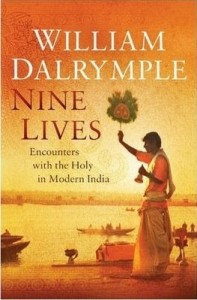There is no denying the fact that Scotsman William Dalrymple is a fantastic writer. He has the inane ability to weave magic carpets and then take you along on a journey through time, be it 100 years or even a 1000. In his work, his hard work and research is reflected in the kind of details he brings forth. ‘The devil is in the details’ and Dalrymple is the indeed the devil that exults in minutiae. Over the past quarter of a century in his adopted homeland, he has worked hard not only to understand what India was, is or could be, but also has come to appreciate what it is not and does not wish to be. Through all his books, one thing is crystal clear; he loves this country truly, with all its intricacies and oddities. In fact, I have a feeling that he loves this land ‘because’ of these oddities, the fact that India does not fall into a model, a land of stark contrasts, a land where time is a just a measure, where faith and belief can literally move mountains. Dalrymple celebrates these contrasts in all his books, and 9 lives happens to be the biggest celebration thus far.
In the three earlier books that I have read, namely, City of Djins, Last Mughal and White Mughals, Dalrymple has kept himself limited to history and historical settings. Sifting through the tomes in the National Archives, he had found little pearls of information and then crafted brilliant necklaces of tales from them. He has been fairly successful in recreating the past, like a painter does. So, in the Last Mughal, we are able to understand the nuances in the court of Bahadur Shah Jafar and how he was caught up in the wave of 1857 mutiny. Or in the city of Djins, he explores Delhi like an archaeologist, uncovering layer after layer of previous cultures that lived and thrived. 9 lives is markedly different from all his previous works. It lies in a mix-match genre, part travelogue, part biographies, part historical, part non-fiction, part fiction, etc. The work does not confirm itself to a single genre, and that is its greatest strength and also the greatest weakness.
tales from them. He has been fairly successful in recreating the past, like a painter does. So, in the Last Mughal, we are able to understand the nuances in the court of Bahadur Shah Jafar and how he was caught up in the wave of 1857 mutiny. Or in the city of Djins, he explores Delhi like an archaeologist, uncovering layer after layer of previous cultures that lived and thrived. 9 lives is markedly different from all his previous works. It lies in a mix-match genre, part travelogue, part biographies, part historical, part non-fiction, part fiction, etc. The work does not confirm itself to a single genre, and that is its greatest strength and also the greatest weakness.
Much like the title goes, 9 lives is basically biographical sketches of 9 individuals, who are in no ways connected to each other (except for the last two). The common thread that is shared in all is that they are in pursuit of the divine through their actions or vocation and when they are not, they have full faith in the power of supplication like Rani, as one of the characters did. So, we have a sketch of a Jain Swetambar nun in Karnataka, a prostitute in the same state, a theyyam dancer in Kerala, folk-lore singer from Rajasthan, a Sufi in Pakistan, a Buddhist monk in Himachal, a Brahmin idol maker in Tamil Nadu and a tantric lady and a baul singer from Bengal. The tales of these rather esoteric individuals is what makes up 9 lives. Intermixed with all the tales, is a lot of historical and contextual perspective, so, in case of the Jain nun, one gets to know the beliefs and customs of the religion, or in case of the theyyam dancer, we are privy to the caste conflict that has been around for centuries. In Lal Paree’s story, the conflict between the two forms of Islam, the liberal and the didactic comes to fore or in the idol maker; it is the old 700 year culture trying to survive itself in the face of challenges from the computer and the Internet. Thus, each story is a khichdi of a certain time, place, or culture pegged on a central figure, who takes it forward. Dalrymple truly immerses his own self in each of these tales, so there is very little “me” here, namely, author’s bias or perspective. And yet, these stories are not without there subtle lessons or lamentations, about the way things are going or have gone. Continue reading
